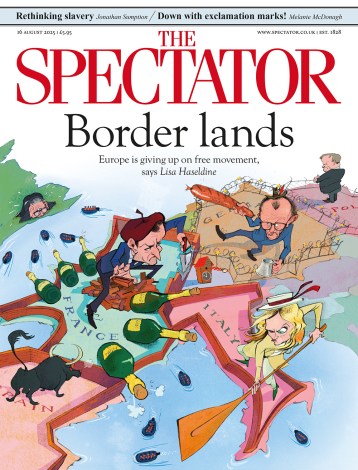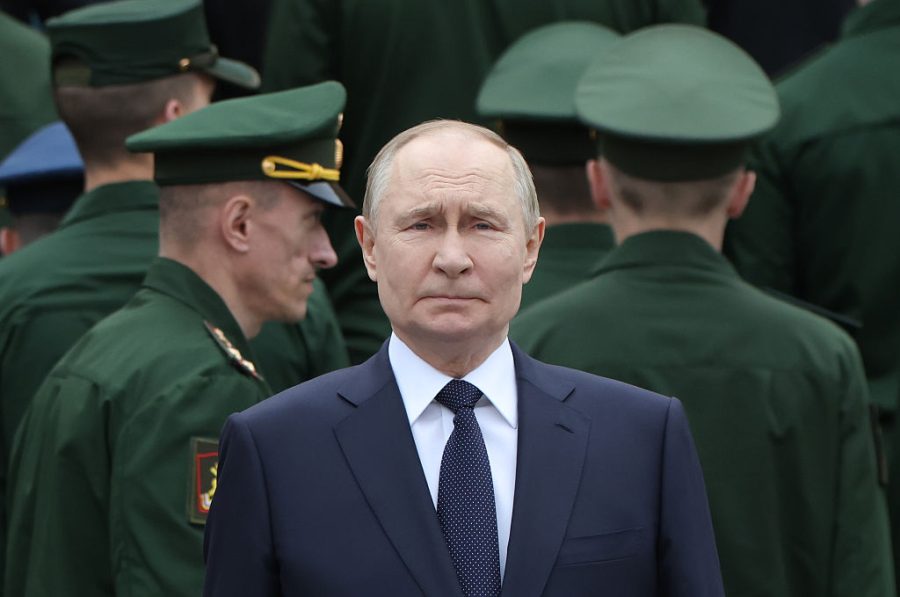Many in Europe may still believe that a Russian invasion of one or more Nato countries is unlikely, if not absurd. This view seems convenient, but it is increasingly divergent from reality. Confidence in the alliance’s principle of so-called collective security is, sadly, becoming not a deterrent but an incentive to aggression by Moscow.
The idea floating in the air in Europe seems to be the following: ‘Russia is bogged down in Ukraine. How can it threaten Britain or the Baltic states?’. This is rhetoric from another era. War is no longer what it used to be. And neither is Russia.
The future invasion of the Baltic states will not be a copy of the Ukrainian campaign
While Western armies rehearse parades and calculate brigade potential, the Russian military-industrial complex is betting on the mass production of FPV drones, electronic warfare systems and swarms of unmanned aerial vehicles. Today, 95 per cent of those wounded in Ukrainian hospitals have mine and explosive injuries, more than 70 per cent of them sustained from drone strikes. Artillery and armoured vehicles are becoming a thing of the past. So are most of the defence approaches adopted by Nato. Ukraine is on the front line of this new war.
Contrary to expectations, it is Ukraine that today has perhaps the most combat-ready army in Europe. As former CIA director John Brennan said in an interview with Sky News: ‘Compared to other armed forces, [the Ukrainian military] outperforms virtually any army in the world, including the United States.’ Not because we have more weapons, but because we have adapted. Europe has not yet done so; would only a crisis force the continent to evolve?
The most dangerous illusion today is to underestimate Moscow’s goals. The Kremlin is not waging war for new territories. The Russians’ goal is not Donbas or even Kyiv. Their goal is a new map of Europe, where the Kremlin once again writes the rules. Putin’s ambitions are geopolitical. That is why no truce will suit them. A ceasefire is not part of Moscow’s strategy because its goal can only be achieved by continuing the aggression against Ukraine. Earlier this month, Russia’s deputy foreign minister Sergei Ryabkov directly repeated Putin’s 2021 ultimatum to Nato: the conflict will not end until the alliance retreats from Eastern Europe.
There is a widespread belief in the West that if Russia risks ‘testing’ Nato in the Baltic states, it will receive an immediate and harsh response. I would like to believe that. But ‘immediate’ is not what we saw in 2014 in Crimea, between 2014 and 2022 in Donbas, or even in the first days of the full-scale invasion. Confidence in deterrence, alas, becomes a vulnerability in itself.
The future invasion of the Baltic states will not be a copy of the Ukrainian campaign. It will not start with tanks and will not be accompanied by declarations. It will be unexpected: with communication blackouts, drone strikes on infrastructure and civilian convoys in uniform without identification marks. Estonia, Latvia and Lithuania may simply wake up as part of Russia. Without a single shot fired by Nato.
The operation will take no more than several days. Nato troops stationed at Adazi in Latvia (about 5,000 men) would not even be able to stop a convoy of civilian minibuses. A political decision in London or Brussels to open fire on ‘unidentified persons’ may not come in time. Or it may not come at all. Yes, to effectively deter Russia, it is not necessary to spend 5 per cent of GDP, as Nato chief Mark Rutte is pushing for. FPV drones cost less than nuclear submarines and are more effective.
But what definitely does not work is to mistake wishful thinking for reality. Where the Baltic states are incapable of defending themselves, Poland is vulnerable to Kaliningrad and Belarus, and the rest of Europe is only building ammunition factories and dual-use border surveillance systems with a view to them being ready by 2027 and beyond.
This is not a strategy. It is a window of opportunity for the Kremlin. And for its masters in Beijing. China and Russia will simply divide Europe into zones of influence. Putin will get his Warsaw Block 2 from the countries of Eastern Europe. And China will get influence over Western Europe, which it will then ‘defend’ from invasion by barbarians from the East.
In fact, Beijing is already preparing to adopt US President Donald Trump’s strategy on Ukraine: ‘the best defence of Western Europe is Chinese business on your territory’. Economic absorption will replace a tank offensive. And for the European elites, it will prove even more tempting.
Russia is not betting on numerical supsuperiority on the element of surprise and its nearly unlimited tolerance for a high number of casualties. It is also banking on the psychological unpreparedness (enhanced by unwillingness) of Western leaders to give the order to destroy any ‘civilian’ invaders hiding behind Vilnius or Narva.
The capture of the three Baltic capitals, the cutting off of the Suwalki corridor and the blocking of Nato’s response are not fantasies. These scenarios have already been modelled. The next step in Russia’s plan is simple: wait for Polish troops to approach the Suwalki corridor and slam the trap shut. This territory is within firing range of Kaliningrad and Belarus, and Nato’s logistics are impossible here.
Don’t think that a hypothetical operation in the Baltics would be something unique: it would be a direct continuation of what Ukrainian troops experienced during their offensive into the Russian territory of Kursk. The large-scale use of drones and the strategy of disrupting logistics have already been tested by the Russian army during their attempts to de-occupy the region. Nato headquarters should study these cases not as exceptions but as the future of war. And they should already be planning their counter-operations based on the Ukrainian model.
This development can only be stopped by shifting from reactive defence to proactive deterrence. For example, by creating a Ukrainian-Polish military contingent focussed on the Grodno region of Belarus. And by rethinking Belarus itself: not as a neutral zone, but as the vanguard of a possible invasion.
The United Kingdom is not just the NHS and pensions. It is also Winston Churchill. And the union for freedom. Today, Europe is once again falling asleep, refusing to acknowledge the new reality. General Waldemar Skrzypczak, former commander-in-chief of the Polish army, said in an interview with Polsat News: ‘If Ukraine loses, we will be next.’ He is wrong about only one thing: the invasion processes in Ukraine and the Baltic states will run parallel.
And it is not about Russia’s strength. It is about Europe’s weakness, including its unwillingness to cooperate. If you do not want war to come to Dover, you must act now. Because the war has already begun. It is just that not everyone has heard it yet.







Comments